Understanding how galaxies form and evolve as a function of cosmological time (z, redshift) is a key goal in modern astrophysics. Standard theoretical models address this problem in a framework assuming a Lambda-CDM cosmology, where the hierarchical gravitational grow of dark matter haloes trace the large-scale structure of the observed baryonic matter. This framework is governed by a set of differential equations which can be computationally solved by the powerful modern computers. Nevertheless, at galactic-scales the evolution is driven by dissipative non-linear processes which are far more complex than what the theory could predict. It is at this point where observations of different kind of galaxies, and clusters of galaxies, at all redshifts, become an essential ingredient to feed semi-analytical models of galaxy formation and evolution.
Remarkable progress in the study of galaxy formation has been made over the last decade, primarily through deep optical and near-IR observations. Although the cosmic history of star formation, and the build-up of stellar mass, have been well quantified as a function of galaxy mass and environment, through its peak at z ∼ 2 and back to the near-edge of cosmic reionization (z > 6), the mechanisms that shape such evolution and generate the variety of morphological classes that we observe in the local Universe are far from being constrained. While progress has been impressive, optical studies of galaxy formation are limited to the stellar and ionized gas emission, being plagued by uncertainties in the way in which photons are re-processed by the gas and dust particles. Studies at centimeter through sub-millimeter wavelengths are required to probe deep into the earliest, dust obscured phases of galaxy formation, to reveal the cool gas that constitutes the fuel for star formation in galaxies.
To understand the evolution of galaxies, it is necessary to tackle the physical mechanisms which could shut off their star formation. In the nearby Universe it has been found that he most important mechanisms are the “mass quenching” and the “environmental quenching” of galaxies. The first relates to internal processes such as AGN activity, while for the latter, several mechanisms have been proposed, including ram-pressure stripping of galaxies by the intracluster medium, and gravitational interactions between galaxies.
Our research group has endeavoured various campaigns for characterising the formation and evolution of galaxies as a function of redshift, mass and cosmic environment. These days, the most remarkable collaborations in which we are involved are:
- ALMA follow-up campaigns (e.g. VALES at z<0.35) to characterise the clod gas and dust of galaxies selected from the largest extragalactic surveys taken by the Herschel Space Observatory, H-ATLAS and HerMES.
- Matched VLT IFU and ALMA imaging at sub-arcsecond resolution of H-alpha emitting star-forming “normal” galaxies at the peak of the cosmic star-formation rate density (from HiZELS and KGES surveys),
- ALMA observations for obtaining deep wide-field sub-millimetre imaging and spectroscopy in fields previously observed by the Hubble Space Telescope, including the HUDF and the Frontier Fields,
- The Gas Stripping Phenomena in galaxies (GASP) survey of “jellyfish” galaxies with MUSE/VLT, which collected data for 114 galaxies selected from the WINGS survey.
- The Blind Ultra Deep HI Environmental Survey (BUDHIES) of galaxies in and around clusters at z~0.2.
Primary researchers in this area:
Eduardo Ibar - Yara Jaffé - Graeme Candlish
Students: Hugo Méndez (PhD), Rosamaria Carraro (PhD)
Postdocs: Thomas Hughes, Alejandra Muñoz-Arancibia, Gustavo Orellana
Past postdocs: Cheng Cheng, Roger Leiton
Active Galactic Nuclei are powered by accretion of matter onto the supermassive black holes that reside in the centres of most galaxies. Black holes in this growing phase can output sufficient energy and momentum to affect large regions of their host galaxy and even the medium within their galaxy group or cluster, even though the central engine is comparatively tiny. The accretion process is extremely efficient in releasing the gravitational potential energy of the surrounding gas, making the accretion disc around the black hole shine brightly over a wide range of wavelengths. This disc, coupled to other structures in the central engine --- X-ray corona, dusty torus and jet --- emit or reprocess emission over the entire observable electromagnetic spectrum. Excepting the jet, the entire central engine is too small to resolve directly, so the accretion process has to be studied indirectly through its spectrum and flux variability.
AGN research at UV focuses on the observational study of the accretion disc/X-ray corona/dusty torus system through IR, optical and X-ray data. We use spectral and variability information to reconstruct the principal components of the central engine and the relation between them. In particular, we track fluctuation in the optical and NIR bands of several AGN to study how the location of the hottest dust around the AGN depends on luminosity. This study can be expanded in the near future to complement upcoming time-based surveys in the optical bands, such as LSST and SDSS-V. We also study the dependence of the obscuring/reflecting torus on luminosity by modeling the reflected spectrum in the X-ray band for wide range of accretion rates, and the shape of the continuum emission itself, to track at which accretion rate it transits from corona to jet dominated. On much larger scales, we study in detail how AGN can impact their surrounding in galaxy clusters, specifically by what mechanism the AGN jets can input energy into the the X-ray emitting intra-cluster medium. These research lines are supported by the Conicyt group grant AnilloFormation and Growth of Supermassive Black Holesand a Partner Group with the Max-Planck Institute of Astrophysics in Garching, Germany.
Primary researchers in this area:
Verónica Motta - Eduardo Ibar - Patricia Arévalo- Yara Jaffé
Postdocs: Lorena Hernandez
Students: Alejandra Melo (PhD) - Ramsés Jerez (MSc), Rosamaria Carraro (PhD), Yaherlyn Díaz (PhD)
Past students: Evelyn Puebla (BSc.), Irma Fuentes (BSc.), Karina Rojas (BSc, MSc, PhD), Daniela Barrios (BSc), Ramsés Jerez (BSc)
Summer Practice students: Nicol Pizarro (UDLA), Francisca Contreras (UChile)
During the last decade, gravitational lensing is one of the few areas of astronomical research which has suffered a major development. Gravitational lenses have been converted into a powerful astrophysical tool in a wide variety of research fields, including: the scale for cosmological distances, the cosmic structure of the matter at large scales, the mass and its distribution in galaxy clusters, the physics of quasars and high-redshift galaxies, the haloes of dark matter in galaxies, among many others.
A gravitational lens is produced when the light from a distant source is deviated by a massive object (e.g. a galaxy or a cluster of galaxies) which lies along the line of sight to the observer. This effect makes the light from the distant object to be magnified and extended, boosting the probability for detection and incrementing its observed surface brightness. The gravitational lensing effect have been categorised in three main classes; (a) strong-lensing: that which produces rings, arcs and multiple imaging (with separation between images from 0.3 to 30 arc-seconds); (b) weak-lensing; that which produces weak distortions of distant objects, and it is observed statistically at the edge of massive objects, for example produced by groups or massive galaxy clusters; and (c) micro-lensing; that which produces micro-images of milli-arcsecond separations and manifest by an increment (or decrement) in the source brightness when monitored as a function of time.
To develop this field, our research group has endeavoured various collaborative projects which cover the following aspects of gravitational lensing:
- Strongly lensed galaxies, taken from the H-ATLAS and HerMES using the ALMA telescope at sub-millimetre wavelengths and by the JVLA, eMERLIN and EVN telescopes at radio wavelengths,
- Strong lensing effect produced by galaxy clusters identified in images and spectra taken with the telescopes Gemini and Hubble Space Telescope,
- Strong and weak lensing effect using groups of galaxies identified in data taken from the SL2S survey (created by the CFHT telescope), and analysing spectra taken with the VLT telescope,
- Micro-lensing effect produced by compact objects (e.g. black holes, stars, planets) to background stars from the galactic bulge using data from the VVV survey (taken with the VISTA telescope),
- Micro-lensing effect on extragalactic sources produced by compact objects (e.g. stars or sub-structure in dark matter haloes) in the haloes of the foreground galaxy using spectra taken with theVLT, MMT and WHT.
- STRong-lensing Insights into the Dark Energy Survey (STRIDES) search for new lensed quasar systems for cosmological applications (the evolution of elliptical galaxies, dark matter content).
- COSmological MOnitoring of GRAvItational Lenses (COSMOGRAIL) aims to measure time delays for most of the known lensed quasars (including the recently discovered by STRIDES).
Primary researchers in this area:
Professors: Verónica Motta - Eduardo Ibar
Students: Alejandra Melo (PhD) - Ramsés Jerez (MSc)
Past students: Evelyn Puebla (BSc.), Irma Fuentes (BSc.), Karina Rojas (BSc, MSc, PhD), Daniela Barrios (BSc), Ramsés Jerez (BSc)
Summer Practice students: Nicol Pizarro (UDLA), Francisca Contreras (UChile)
Postdocs: Thomas Hughes, Alejandra Muñoz-Arancibia
Past postdocs: Tomás Verdugo, Roberto Muñoz, Gael Foëx, Juan Magaña
Numerical simulations have developed over recent decades into a crucial tool for physics, astrophysics and cosmology. In particular, numerical simulations offer the only possibility to investigate the non-linear process of structure formation due to gravitational instability in the dark matter distribution in our Universe, as well as the complex interplay of this structure formation with the astrophysical processes that affect the visible (baryonic) material in our Universe (star formation, supernovae, AGN feedbacks). Such simulations furnish the theoretical predictions of our standard cosmological model, which may then be compared to the wide range of available data about galaxy clustering, galaxy evolution, weak and strong lensing, and other observables.
Furthermore, simulations provide a unique opportunity to investigate the consequences of theories that attempt to explain the still mysterious dark sector of our Universe (dark matter and dark energy). One example ithe MOdified Newtonian Dynamics (MOND) paradigm which attempts to explain the phenomenological aspects of dark matter by means of a modification of the Newtonian gravitational force. The consequences of such a modification are profound, and would impact all aspects of the evolution of our Universe, from cosmology to galaxy formation and evolution. Many researchers have proposed alternative models to explain dark energy, including modifications of Einstein's theory of gravity, General Relativity, as well as the inclusion of new matter/energy components, such as a scalar field referred to as "quintessence". Finally, there may be interactions within the dark sector that unite both dark matter and dark energy, giving rise to further interesting phenomenological consequences, that may be examined in simulations and compared with observations.
Numerical simulations are a fairly recent addition to the extragalactic group at IFA, yet there are several lines of research to investigate non-standard cosmological models:
- Numerical investigations of MOND: Dr. Graeme Candlish has investigated the consequences of MOND on galaxies by using the RAyMOND code developed by him in collaboration with researchers at the Universidad de Concepción, Chile and KASI, Korea. (Publication).
- The consequences of MOND for galaxy evolution: galaxies within dense environments would be subject to a MOND effect known as the "external field effect" that has no counterpart in Newtonian gravity. Several members of our group (Dr. Graeme Candlish, Dr. Yara Jaffé) in collaboration with researchers at Universidade de Sao Paolo and KASI, Korea, have investigated the consequences of this effect on galaxies within clusters.
- MOND cosmology: there is still no complete theory of a MOND cosmology, thus one of our projects involves the search for a possible complete MOND cosmological model, which may then be used to contruct a fully self-consistent MOND cosmological simulation.
- Dark energy/dark matter couplings: as stated earlier, it is entirely possible that the dark sector contains hidden surprises just waiting to be discovered. In this project we are investigating the possible cosmological consequences of different types of couplings between dark energy and dark matter, and their potential impacts at smaller scales.
Researchers in this area:
Students: Daniela Palma (Magister)
Understanding the distant Universe is one of the major drivers in the development of astronomical observatories and space missions. By the end of this decade, Chile will host some of the biggest telescopes ever constructed, including ALMA, E-ELT and GMT. Our research group in extragalactic astronomy concentrates in the study of the evolution of the Universe and its content, taking advantage of the most powerful observatories in space (Hubble, Chandra, NuSTAR, Herschel) and Earth (VLT, VLA, ALMA, Gemini, APEX). In particular, we can classify our research in three main areas: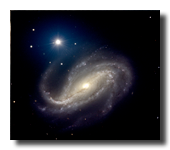



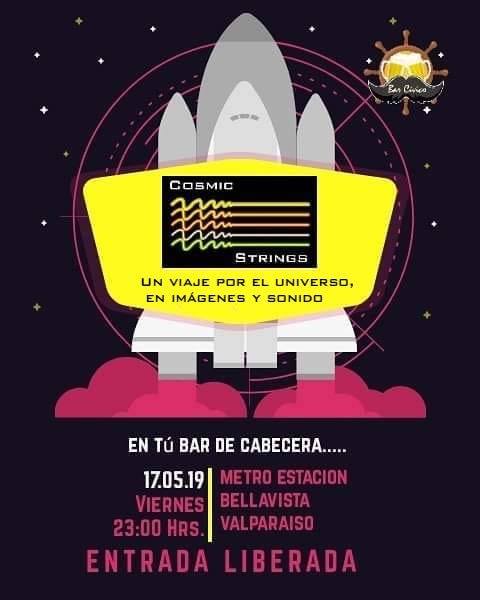 16/05/20019 Este viernes 17 de mayo se viene con un panorama de otro planeta, con el show astronómico de la banda Cósmic Strings integrada por varios investigadores del Instituto de Fisica y Astronomia. La actividad, de entrada liberada, tendrá lugar a las 23:00 horas en el Bar Cívico, ubicado en calle Blanco 1273, Valparaíso, cercano a la estación Bellavista del Metrotren. La música inspirada en planetas y...
16/05/20019 Este viernes 17 de mayo se viene con un panorama de otro planeta, con el show astronómico de la banda Cósmic Strings integrada por varios investigadores del Instituto de Fisica y Astronomia. La actividad, de entrada liberada, tendrá lugar a las 23:00 horas en el Bar Cívico, ubicado en calle Blanco 1273, Valparaíso, cercano a la estación Bellavista del Metrotren. La música inspirada en planetas y...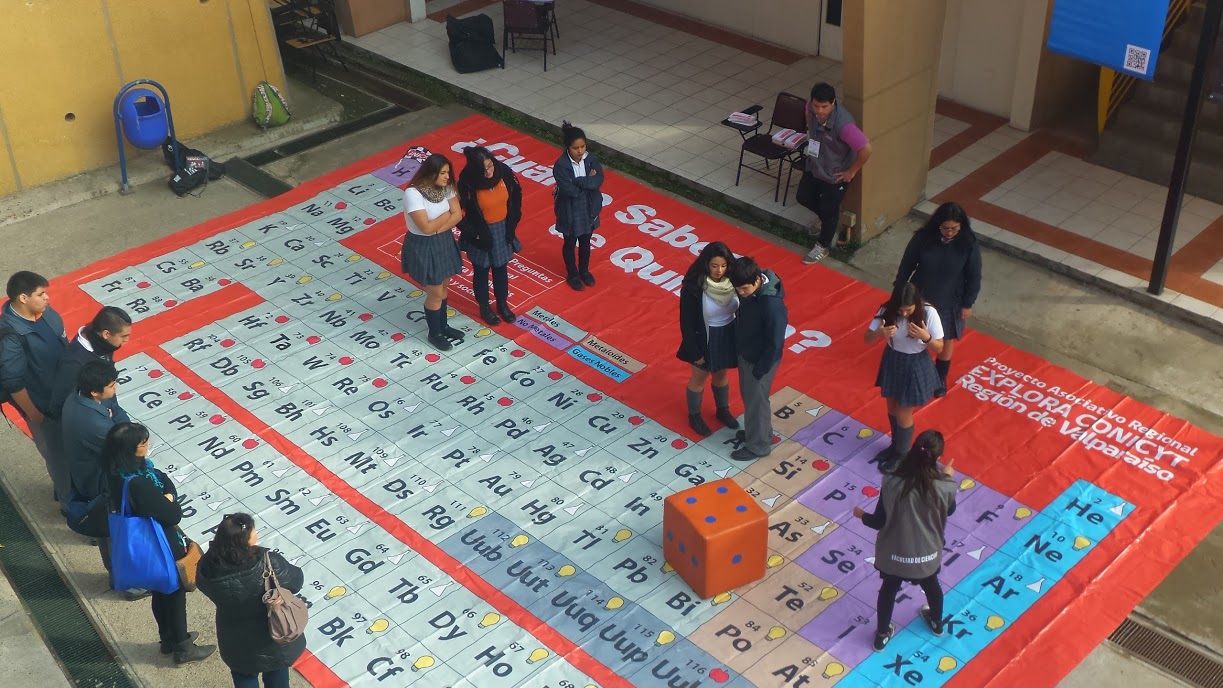 16/05/2019 Como ya es tradición, el viernes 24 de mayo, el Instituto de Física y Astronomía formará parte de la Feria de la Ciencia que cada año la Universidad de Valparaíso realiza para público escolar de la región. El objetivo es ofrecer a escolares y comunidades locales una muestra de actividades prácticas de investigación y formación en un espacio académico. Los alumnos tienen la po...
16/05/2019 Como ya es tradición, el viernes 24 de mayo, el Instituto de Física y Astronomía formará parte de la Feria de la Ciencia que cada año la Universidad de Valparaíso realiza para público escolar de la región. El objetivo es ofrecer a escolares y comunidades locales una muestra de actividades prácticas de investigación y formación en un espacio académico. Los alumnos tienen la po...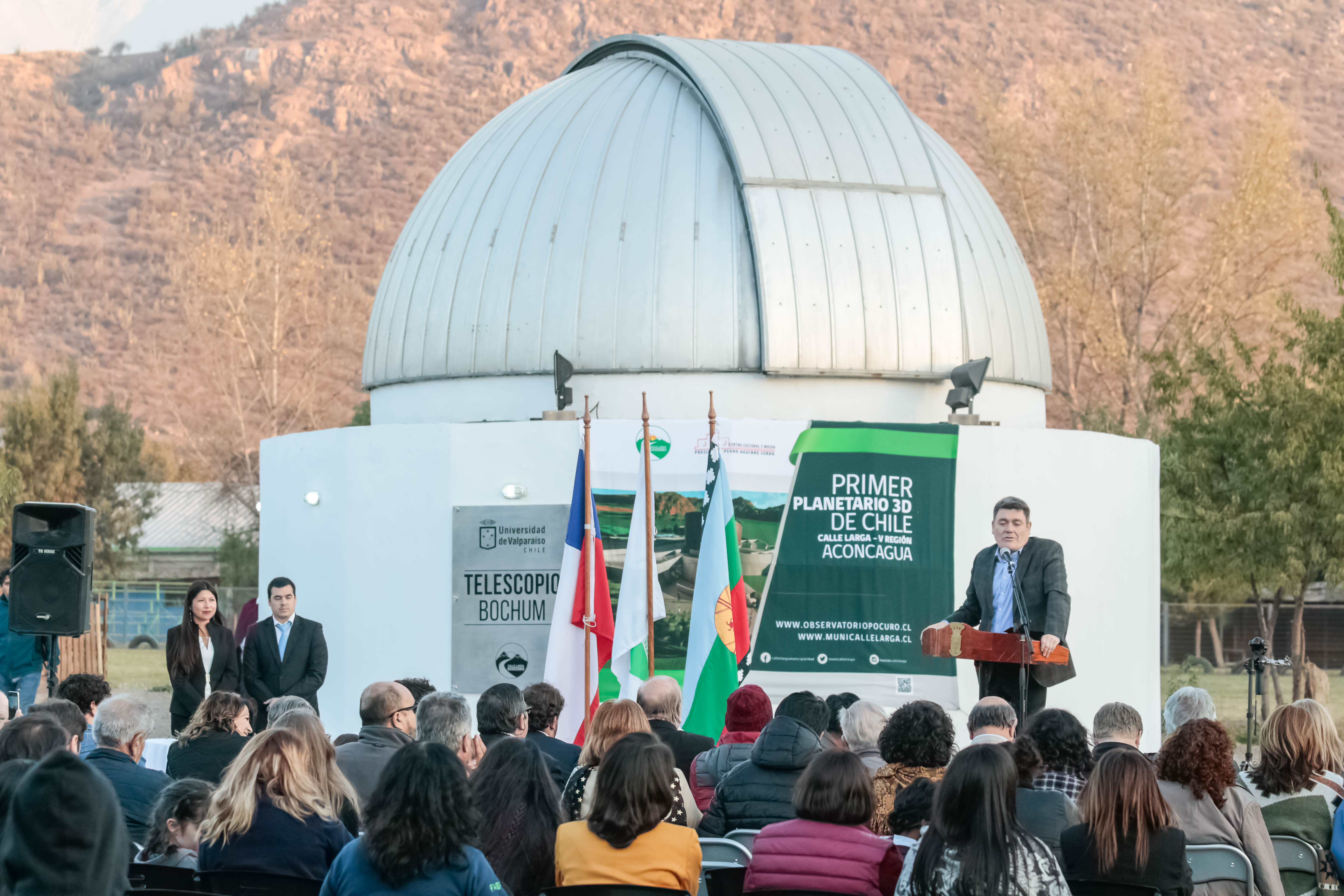 14/05/2019 La comuna de Calle Larga, distante 137 kilómetros de Valparaíso y sólo 75 de Santiago, inicia su despegue como nuevo epicentro astronómico de la zona central del país gracias al desarrollo que ha experimentado el Observatorio Pocuro, ubicado en el Centro Cultural Pedro Aguirre Cerda.
Este camino se ha ido pavimentando con la colaboración de la Universidad de Valparaíso, al establecer una...
14/05/2019 La comuna de Calle Larga, distante 137 kilómetros de Valparaíso y sólo 75 de Santiago, inicia su despegue como nuevo epicentro astronómico de la zona central del país gracias al desarrollo que ha experimentado el Observatorio Pocuro, ubicado en el Centro Cultural Pedro Aguirre Cerda.
Este camino se ha ido pavimentando con la colaboración de la Universidad de Valparaíso, al establecer una...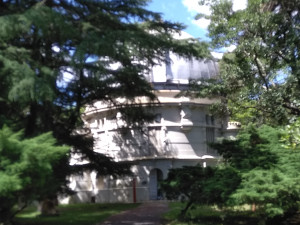 14/05/2019 La Dra Maja Vuckovic participará como expositora en la escuela de verano “Pulsaciones Estelares a lo largo de la evolución estelar” que se llevará a cabo en La Plata, Argentina entre el 11 y el 22 de noviembre.
El evento es una de las actividades astronómicas del año destacadas por el Boletín de Estrellas Masivas (Massive Star Newsletter) y se enmarca como parte del proyecto POEMS, Marie Curie Horizon 2020, d...
14/05/2019 La Dra Maja Vuckovic participará como expositora en la escuela de verano “Pulsaciones Estelares a lo largo de la evolución estelar” que se llevará a cabo en La Plata, Argentina entre el 11 y el 22 de noviembre.
El evento es una de las actividades astronómicas del año destacadas por el Boletín de Estrellas Masivas (Massive Star Newsletter) y se enmarca como parte del proyecto POEMS, Marie Curie Horizon 2020, d...
 10/05/2019 Utilizando observaciones submilimétricas del disco de escombros alrededor de la estrella debaja masa TWA 7, un grupo internacional de astrónomos liderado por la investigadora del IFA y Directora del NúcleoMilenio de Formación Planetaria Amelia Bayo, concluyó que la arquitectura asumida para esteobjeto es diferente a lo qu...
10/05/2019 Utilizando observaciones submilimétricas del disco de escombros alrededor de la estrella debaja masa TWA 7, un grupo internacional de astrónomos liderado por la investigadora del IFA y Directora del NúcleoMilenio de Formación Planetaria Amelia Bayo, concluyó que la arquitectura asumida para esteobjeto es diferente a lo qu...

